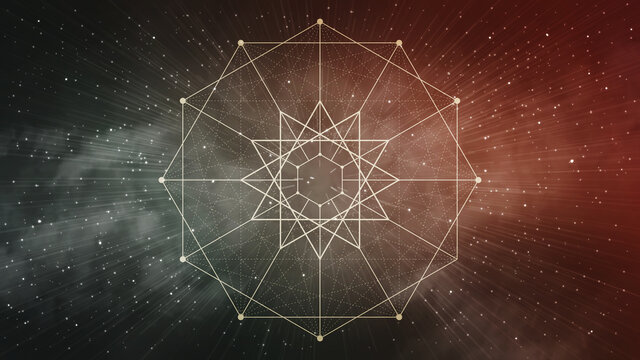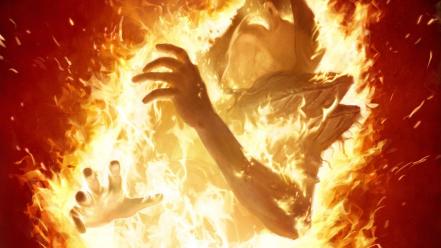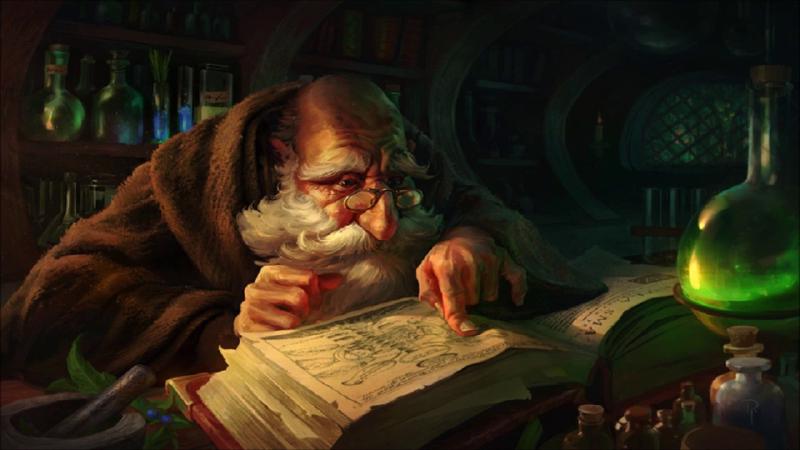“It’s still magic even if you know how it’s done.”
— Terry Pratchett, A Hat Full of Sky

OOOn many planes, the start of accessing the arcane has a similar story: An individual uttered a few random words, made some random gestures, or combines a few random and esoteric components only for something unexpected to happen. Maybe fire was created, water was cleaned, or the sky darkened. In attempts to recapture that original event, they make discoveries, things are learned, and in certain cases, people are injured or worse.
Arcane Magic is intense in all of its forms, but in its raw and primal state, it can be very dangerous. This is called Unenlightened Arcane Magic and was how it was practiced for a long time, well into the Second Age. This is also how non-intelligent life manifests arcane effects. Because of this, many worlds began attempts to refine and control it to lessen the dangerous side effects that wizards were prone to.
One reason for this is what is known as Halt’s Theory of Arcane Expansion. Tormoid Halt was a Bone Skink wizard during the First Age who fancied himself as a philosopher, scientist, and engineer in the arcane arts. His theory states: The arcane will always attempt to fill whatever space it is channeled through until it is able to diffuse. When a wizard casts a spell, he is channeling arcane magic through himself to achieve some sort of effect. For instantaneous spells, such as summoning a bolt of lightning, the time the wizard needs to channel is minimal. However, for a sustained spell, for example, the summoning of a persistent thunderstorm, the wizard would need to sustain the effect. One could take this idea and apply a wizard trying a new spell that is untested and realize how an immense torrent of arcane energy being brought in through a small space could create… dangerous results.

Aside from Halt’s Theory of Arcane Expansion many other postulates came into existence to help understand the practice of the arcane. Grosvenor’s Rules of Recital, The Robbilard Appendix, The Valerie Theories, and Uncle Zed’s Infinity Conjecture. Zed’s daughter penned the latter of those because of his explosive demise: the result of which is the knowledge that one cannot attempt to use the concept of infinity as a duration of a spell.
Spells designed during the Unenlightened period were also extensively lengthy, incredibly temperamental, unforgivingly touchy, and required lengthy periods of rote and memorization. For the uninitiated, it is this view of the arcane that has created the stereotype of wizards needing to dedicate their entire lives to the craft.
It is hard to track down what started the transition to the Enlightened Age of arcane magic, but most point to Hiawassee Yarkee, a Canyon Folkling wizard and investigator. Through the course of her education and life, her teachers and contemporaries expressed puzzlement on how she could remember as many spells as she could. She would explain how her father, a man responsible for remembering people by their faces as a tribal leader, used a process that would be known as the method of loci.

Through learning about the process of developing a memory palace and several other improvements, the development of what is today known as the Duodenary Theurgic Matrix Process had begun. This is considered to be the primary difference between older arcane magic and what would be called Enlightened Arcane Magic.
I will detail the specifics of what a theurgic matrix is in another post, but here is the summary: by standardizing and codifying spells, a wizard can think of a spell as some sort of shape made up of differing components. Two measurements define their theurgic matrix: How wide it is, or how many spells one could have mentally available at one time and how tall it is, or how many individual components can make up said spells. You can think of it as a quantity vs. quality measurement. On one side of the axis, you have wizards that can call upon numerous weaker spells, whilst the other has wizards with a smaller selection of powerful spells. Most wizards strive to be somewhere in-between. When a spell isn’t deemed necessary for use, the wizard can replace it by moving it from their theurgic matrix, though this process takes time and concentration.

Aside from the development of what would become the Duodenary Theurgic Matrix Process, one of the other major changes during the age of arcane enlightenment was dividing wizardry into separate colleges, focusing on a theme, element, and composition. While at the time this caused concern and made some wizards upset, the benefits behind the change made their complaints die-off quietly over a short period.
With the codification and standardization of spell design, the capabilities of the theurgic matrix, the separation of magical concepts into similar colleges, and many other contributions, the development of modern arcane magic was complete.

TTThe modern era teaches twelve different colleges of magic. Unfortunately, the development of a theurgic matrix specializing in one college precludes the development of a second theurgic matrix, though there is a wide spectrum of capability within each to not make it necessary. While many wizards are generalists in their colleges, each college is further divided into three spheres that allow the potential for intense specialization. While they typically refer the colleges to their theurgic name, on some planes they are called different things. The most common alternative would be a Pyrotheurgist being referred to as a Pyromancer for example.
Pyrotheurgy
Pyrotheurgy is the arcane manipulation of magic to achieve effects based on fire, heat, and magma. Pyrotheurgy is believed to be one of the most ancient forms of magical manipulation practiced, and all major cultures have practiced it.
Fire has always fascinated people, and it is no mistake that the development of fire-building and the utilization of fire are considered being amongst the first steps towards developing civilizations. Beings who develop Pyrotheurgic powers were embraced or feared in primitive society, but the usefulness of fire was never under question.
These days Pyrotheurgy is one of the more popular forms of magic existing across the planes, even with its limited scope. Many Pyrotheurgists have been captivated by the flames all their lives, and the development of the capabilities to control it is a worthwhile goal.
Hydrotheurgy
The practice of Hydrotheurgy is one of the magical arts correlating to one of the most basic abundant of substances. Hydrotheurgy is the arcane manipulation of magic to achieve effects based around water, cold, and the ocean.
Water is necessary for life, and with each culture depending on it, it is easy to see where a level of admiration could arise for it. Being able to control the very substance of water, the chilling bite of the cold, or the adamant rage of the ocean lead earlier Hydrotheurgists to a level of unrivaled power in coastal communities. In some worlds, especially those where the oceans cover most of the surface, these beings could almost be godlike in their power.
These days, it isn’t uncommon to find Hydrotheurgists working on sailing vessels, in port towns, or any job involving traversing large bodies of water. Some of them instead find work conjuring water in areas where there is none, bringing life to normally dead areas as they create and maintain these magical oases. Some even use their mastery to explore deep places that most could only dream to reach.
Aerotheurgy
Another one of the more basic forms of magic and thus also more popular, Aerotheurgy is the arcane manipulation of magic to achieve effects based around wind, sound, and storms. Through controlling storms, they can summon lightning, rain, and horrific winds that can destroy all but the most sturdy of structures.
Controlling the weather is one of the most basic forms of Aerotheurgy, and many primitive cultures had things similar to the rain dance. Calling the rain to help crops is possibly where Aerotheurgy started, but as of today, Aerotheurgists are capable of many more things, though some still find work aiding farming communities and assisting with the weather.
Modern Aerotheurgists can find work doing many more things than just changing the weather, however. Some find work on sailing vessels or even communities where wind power is used for mechanical labor. They are also capable with combat, with sonic spells turning people in plate armor to nothing more than jelly or tearing away flesh and bone with shearing winds.
Terratheurgy
The magical art of Terratheurgy is one of the four most popular magical arts taught across the planes. Terratheurgy is the arcane manipulation of magic to achieve effects based on stone, metal, and gems. They can manipulate many aspects of earth, however, including lava, minerals, seismic force to even natural gases and mud.
As long as people have walked on it and dug underground, they have held a certain respect for the earth. Jewels and gems captivate and fascinate while metals have built and vanquished entire civilizations. Mastering the magical art of Terratheurgy leads one to a large magical toolkit, ranging from spells of destruction and aid to those that, left unchecked, could destroy metal-based economies.
Terratheurgists don’t have a hard time finding work with everything they are capable of. Many find work assisting large-scale blacksmiths or even operate smithies on their own. Some find work as prospectors for large trade magnates. Sometimes, some even operate subterranean travel-ways for worlds where the surface is dangerous, or to provide shortcuts across dangerous or difficult features on the surface.
Naturatheurgy
Naturatheurgy is an old form of magic that is popular among the worlds of the Planar Council. Naturatheurgy is the arcane manipulation of magic to achieve effects based on nature, plants, and beasts.
Many primitive cultures practiced forms of Naturatheurgy, ranging from spells that controlled or manipulated beasts to assisting crops and manipulating the landscape. After the magical schools came to fruition as of the First Age, Naturatheurgists could meet and further define the art. Those considered to be beastmasters or druids could expand their art into other branches now available to them.
As the exact nature of flora and fauna varies across the planes, Naturatheurgists instead learn to work within specific collections, such as fungus, trees, felines, and insects. If spells had to be learned for each type of creature or plant, they would have the largest collections of spells of the magical arts!
Anitheurgy
Anitheurgy is the magical art with the most discussion surrounding it. While it is not inherently evil, its purview of control is a sensitive subject for many beings. Anitheurgy is the arcane manipulation of magic to achieve effects based on life and death, spirits, and souls. In the past, it was also referred to as Necrotheurgy.
Death is seen as many as the last stage in life, but for others, it is a mere stepping stone. There has always been a fascination with it, and many primitive cultures started their existence through the development of ceremonial burial. While death is no evil in its own right, it is difficult for many to see the positive connotations of this art.
Anitheurgy is not as common as other forms of magic, but an Anitheurgist can find employ anywhere. There are some societies where they are in high demand, especially those that use the undead for labor or have beliefs involving ancestor worship. Their art is also one of healing, though albeit differently than others. Anitheurgists can often be found being hired to combat other Anitheurgists, and there are some famous for making a living doing so.
Dynatheurgy
Being one of the first magical colleges to be entirely developed and conceived in the enlightened era of arcane magic, Dynatheurgy is arcane manipulation to achieve effects based around different universal forces, primarily electricity, magnetism, and gravity.
Dynatheurgy didn’t see the beginning of its development until the Second Age, with it coming firmly into its own during the Third Age. Since the college requires the understanding of advanced concepts, Dynatheurgists draw a certain level of attention to beings in more uncivilized areas. In civilized areas, their magic is seen as a boon for many crafts, and it isn’t unusual for a traveling Dynatheurgist to earn some coin in the places he visits.
Spells manipulating individual aspects of these forces have always existed, but there was never a unifying school for them. Most spells that were electrical were conjured by Aerotheurgists manipulating storms and summoning lightning. Magnetism was known as a trick amongst Terratheurgists.
Mutotheurgy
Mutotheurgy is the art of magic based on different forces of change and transformation. It is the arcane manipulation of magic to achieve effects based on transmutation, radiation, and chemicals. Through their magic, they can alter things in a wide variety of ways, with spells acidic, atomic, or corruptive.
One of the magical arts developed after the founding of the magical schools in the Second Age, Mutotheurgy is magic that is rarely found outside of civilized areas. Many of the spells are based on advanced concepts that more primitive and uncivilized areas don’t understand. Because of this, it is not common magic, though it is more common than the newer magics of the Fourth Age.
Capable of altering objects in a variety of ways, Mutotheurgists can find a wide variety of work. They have good relationships with alchemists, whose work with various chemicals and substances is easily relatable. There is some ill will towards Mutotheurgists, however, as their magic lingers longer than others and has more drastic lasting effects. This isn’t because of their magic being more powerful, but simply because of the substances they control.
Astrotheurgy
The magical art of Astrotheurgy is the arcane manipulation of magic to achieve effects based around the sun, moon, stars, and other stellar phenomena. It is probably the rarest of magic, even though it has been practiced by almost every culture in some way.
As long as people have been able to see, the skies have captivated them, the stars even more so. Entire cultures have developed over the worship of suns or moons, their mystery always drawing interest and curiosity. Primitive Astrotheurgic spells were used for divination though as time went on, more and more spells began to be developed that used other concepts.
Astrotheurgists are not as common as other wizards, but their magics are no less impressive. They have a unique reputation as the bane of Therianthropes such as werewolves and wererats, as the Astrotheurgist’s capability to manipulate lunar properties allows them to affect these creatures in ways normally others can’t. Vampires also loathe Astrotheurgists, as they can conjure the sun’s light in the most isolated of places, literally bringing one of the vampire’s weaknesses directly to them. Being able to see portents and read the stars, it’s not uncommon for an Astrotheurgist to act as an impromptu fortune-teller should the need arise.
Omnotheurgy
The college of Omnotheurgy is misunderstood and one where the true power behind its spells is limited mainly by the imagination and intelligence of the caster. Omnotheurgy is the arcane manipulation of magic to achieve effects based on reality, time, and magic itself.
Omnotheurgy requires an understanding of advanced concepts, so it usually is not found in lesser civilized areas. Being able to control the very essence of reality, time, and magic grants Omnotheurgists a lot of power, which has to lead to a lot of fear by those not fully aware of an Omnotheurgist’s capabilities.
With the Omnotheurgist’s capabilities of manipulating time, there have been multiple instances throughout the ages of Omnotheurgists interacting with times outside their own. Omnotheurgists frequently discuss the possibilities and repercussions of paradoxes, but there is no concrete evidence as to their existence or effects. Being able to also control and manipulate magic in its basic form grants them almost a level of control over all other forms of magic, and even other wizards view Omnomancers differently.
Luxotheurgy
Luxotheurgy is one of the newest of the magical colleges to be taught amongst the worlds of the Planar Council. Luxotheurgy is the arcane manipulation of magic to achieve effects based on light, color, and illusions. Though the magic focuses on light, there are also spells used to alter and manipulate shadows and darkness as the counterpoint to light.
Luxotheurgy has a long history despite only really being developed recently. There have always been spells dealing with light and dark, and even some dealing with the creation of illusions, but it wasn’t until the Third Age that the Planar Council engaged with cultures that had a mastery of magical illusions, which lead to the creation of Luxotheurgy.
With spells of light and darkness, Luxotheurgists find themselves with spells useful for observation and concealment. Their mastery over their domain gives them a wide toolset in which to use for spells, and their art was the first to develop spells of pure invisibility or illusion. With their additional control over darkness, they can play into the fears of certain beings as well.
Hemotheurgy
Being one of the newest arcane arts embraced by the Planar Council, Hemotheurgy is the arcane manipulation of magic to achieve effects based on blood, the body, and sentience.
Varying cultures have practiced forms of Hemotheurgy through the years, but it wasn’t until meeting with several of them in the Third Age that the various universities and colleges across the planes began research into Hemotheurgy. Since its addition to the magical repertoire is still relatively new, Hemotheurgy is uncommon.
Being able to control many aspects of their bodies and the bodies of others, Hemotheurgists can find employment in roles that either heal or harm. The more esoteric capabilities they possess, such as the creation of new life and sentience, are often faced with bewilderment or fear. Animating stone, metal, or other materials to move on their own or creating entirely novel forms of life from scratch gives them a large pool of tools to work with.
YYYou might have noticed that this post is titled as to regard the Planar Council’s ways of arcane magic, but there are other ways and practices to be found amongst the planes. We can discuss those another time, as well as go into more depth into the idea of a theurgic matrix!

“One man’s ‘magic’ is another man’s engineering. ‘Supernatural’ is a null word.”
— Robert A. Heinlein
